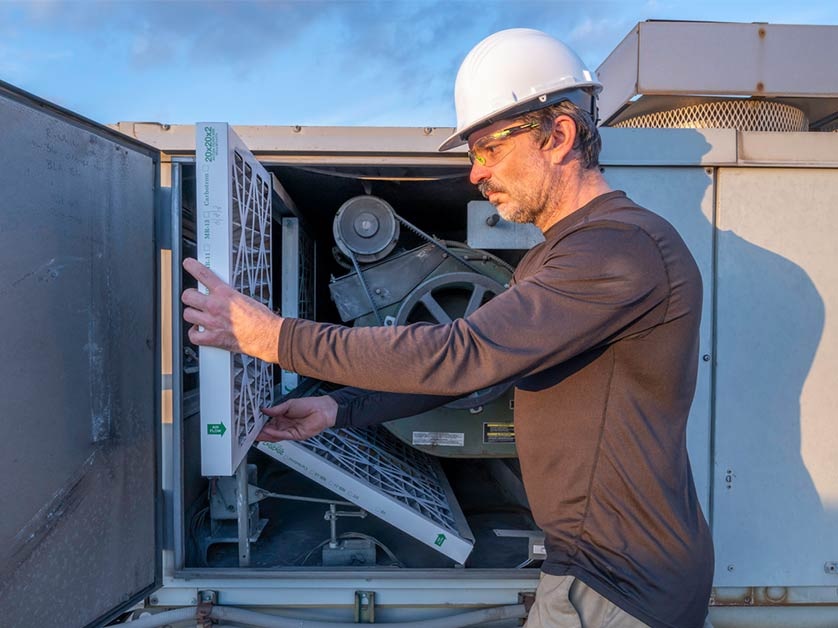Whether it’s a business building or a residential complex, efficient HVAC systems are crucial in today’s built environment for keeping occupants comfortable indoors. A crucial but often overlooked component of these systems is the rooftop platform. Rooftop platforms play a vital role in supporting HVAC equipment, ensuring optimal performance, accessibility for maintenance, and safety compliance. This comprehensive guide explores the significance of rooftop platforms in HVAC systems, covering design considerations, installation practices, maintenance strategies, and safety protocols.
Rooftop Platforms
Rooftop platforms, also known as equipment platforms or supports, are elevated structures installed on building rooftops to accommodate HVAC platforms, including air conditioning condensers, ventilation fans, and heating equipment. These platforms provide a stable foundation for mounting HVAC equipment, ensuring proper airflow, minimizing vibration, and protecting the roof membrane from damage.
Design Considerations
Designing rooftop platforms involves careful consideration of various factors to ensure functionality, structural integrity, and compliance with building codes and standards. Key design considerations include:
1. Load Capacity:
Rooftop platforms must be engineered to support the weight of HVAC equipment, including the unit itself, additional components, and any personnel required for installation and maintenance.
2. Structural Support:
The platform’s structural design should distribute the load evenly to prevent overloading and minimize stress on the building’s roof structure.
3. Accessibility:
Provision for safe and convenient access to HVAC equipment is essential for maintenance, repair, and replacement activities. Access points, such as ladders, stairs, or roof hatches, should comply with safety regulations.
4. Spacing And Layout:
Proper spacing between HVAC units and other rooftop equipment is necessary to maintain adequate airflow, prevent interference, and facilitate servicing.
5. Weather Protection:
Rooftop platforms should incorporate features to shield HVAC equipment from adverse weather conditions, such as wind, rain, snow, and excessive sunlight.
6. Material Selection:
Environmental variables, load requirements, and durability are some of the most important considerations when choosing materials for rooftop platforms. Common materials include steel, aluminium, and composite materials.
7. Safety Features:
Guardrails, handrails, and other safety barriers are essential components of rooftop platforms to prevent falls and ensure compliance with occupational safety regulations.
Installation Practices
The installation of rooftop platforms should be performed by qualified professionals in accordance with industry standards and local building codes. Proper installation practices include:
1. Site Assessment:
Before installation, a thorough site assessment should be conducted to evaluate roof conditions, structural support, and access points.
2. Foundation Preparation:
Ensuring a stable foundation is crucial for the safe installation of rooftop platforms. Depending on the roof type and configuration, various anchoring methods may be employed, such as ballast blocks, roof attachments, or seismic restraints.
3. Assembly And Erection:
Rooftop platforms are typically assembled on-site and erected using appropriate lifting equipment and techniques. Careful attention should be paid to alignment, levelling, and securing the platform to prevent shifting or instability.
4. Equipment Mounting:
HVAC units should be securely mounted on the rooftop platform using approved mounting brackets, vibration isolators, and fasteners. Proper alignment and clearance around the equipment should be maintained to facilitate airflow and serviceability.
5. Electrical And Plumbing Connections:
Electrical wiring, conduit, and plumbing connections should be installed by licensed professionals in compliance with electrical and plumbing codes. Adequate provision for drainage and condensate disposal is essential to prevent water damage and mould growth.
Maintenance Strategies
Rooftop platforms and HVAC systems require regular maintenance to keep running well and last as long as possible. Maintenance strategies for rooftop platforms include:
1. Inspection And Cleaning:
Periodic inspections should be conducted to assess the condition of rooftop platforms, identify signs of wear or corrosion, and remove debris or obstructions that may impede airflow.
2. Equipment Servicing:
HVAC units should be serviced according to manufacturer recommendations, including filter replacement, lubrication, belt tension adjustment, and coil cleaning. Scheduled maintenance tasks help optimize equipment efficiency and prevent costly breakdowns.
3. Structural Integrity Checks:
Rooftop platforms should have their beams, columns, and connections checked for any indications of corrosion or degradation. Repairs or reinfo cements may be necessary to maintain structural integrity and safety.
4. Safety Inspections:
Regular safety inspections should be conducted to ensure compliance with occupational safety regulations, including the integrity of guardrails, handrails, and fall protection systems.
5. Documentation And Record Keeping:
Maintaining accurate records of maintenance activities, equipment specifications, and inspection reports is essential for tracking performance, identifying trends, and demonstrating compliance with regulatory requirements.
Safety Protocols
Safety is paramount when working on rooftop platforms, especially in environments with potential hazards such as heights, electrical equipment, and moving machinery. Safety protocols or rooftop platforms include:
1. Training And Certification:
Personnel involved in rooftop work should receive adequate training and certification in fall protection, ladder safety, electrical safety, and other relevant topics.
2. Personal Protective Equipment (Ppe):
Proper PPE, including hard hats, safety harnesses, gloves, and non-slip footwear, should be worn at all times when working on rooftop platforms.
3. Fall Protection Systems:
To lessen the likelihood of falls and their effects, it is recommended to install safety netts, guardrails, or personal fall arrest systems (PFAS).
4. Emergency Preparedness:
Emergency procedures, such as rescue plans and evacuation routes, should be established and communicated to all personnel working on rooftop platforms.
5. Regular Safety Audits:
Improve rooftop safety by finding any dangers and fixing them with the use of frequent safety audits and risk assessments.
In conclusion, rooftop platforms play a critical role in supporting HVAC systems, providing a stable foundation for equipment installation, maintenance, and operation. Building owners a d facility managers may make sure that HVAC systems run efficiently and reliably while keeping people working on rooftop platforms safe by following best practices in design, installation, maintenance, and safety.



